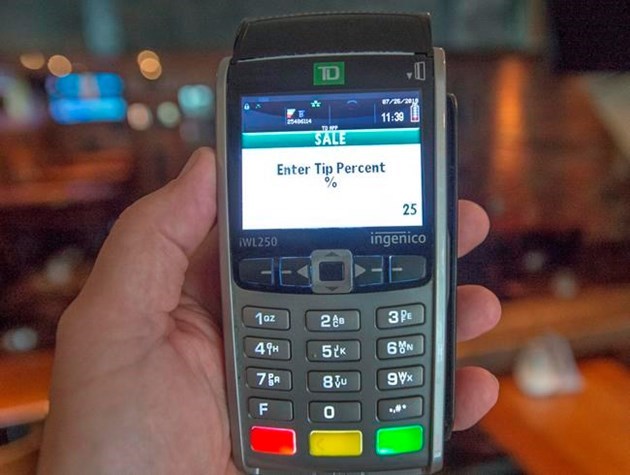Some may call me frugal, thrifty or simply cheap. But I like to consider myself sensible. In a time of expansive inflation, I think we all must take a moment before we get carried away with hiking up costs or doling out extra money.
Yes, some things cost more, there is no doubt about that. Whether from poor growing seasons, international conflicts and war, shipping backlogs or what have you – the price of products are increasing... but should the cost of services be rising too?
I surely can’t be the only one who has noticed that tipping prompts on credit and debit machines at restaurants are going up. This has already been dubbed by others across the country as ‘Tip-flation.’
Recently, a restaurant debit machine prompted me to tip either 18 per cent, 20 per cent, 25 per cent or other. Upon seeing this new prompt, I was fueled by an internal rage that surprised even me.
I really couldn’t believe it, the quality of service I received had not increased from the previous time I was a patron at the restaurant, and I had also noticed a rise in the price of the food I ordered.
I hit the ‘other’ option and punched in 17 per cent. Prior to the pandemic, I reserved tipping 18 per cent for exceptional service or for those servers who worked hard but were overwhelmed with the number of tables under their watch.
There is a theory that fits this exact gratuity-prompting phenomenon, why it works but also how it could backfire on the server as well. The theory is called ‘choice architecture,’ and it relates to how choices are presented.
The pre-set choices for a tip at the end of a dine-in meal are an example of this.
The message on a point-of-sale device is both a subtle and overt way to express an expectation in the dining context. The numbers you see do influence people's decisions and perceptions about what the right amount to tip is, but also what an appropriate amount to pay for service is.
For some, they may be obliged to pay a higher gratuity, but for others, like myself, it can cause a backlash against the new expectations.
It wasn’t long ago that a 15 per cent tip was the top end payment for service, at least that was the average when I worked as a waitress.
During a conversation I had with a friend who also served, she told me, “If you can’t afford to tip properly, you can’t afford to eat out.”
I thought this was in fact quite harsh, maybe because I was used to working in a diner that served people from all walks of life or maybe it was because I had worked just as hard in a fast-food restaurant for many years and received no gratuities at all.
But the more I ponder the social norm of tipping, which is predominantly a North American custom, the more I am over the whole social contract of it.
If we get right down to it, the word ‘tips’ stands for “To Insure Proper Service.” I cannot tell you how many times I have paid for poor service simply because that is what Canadians do.
Now with the rising cost of virtually everything, eating out has become a luxury that many may not be able to afford soon.



